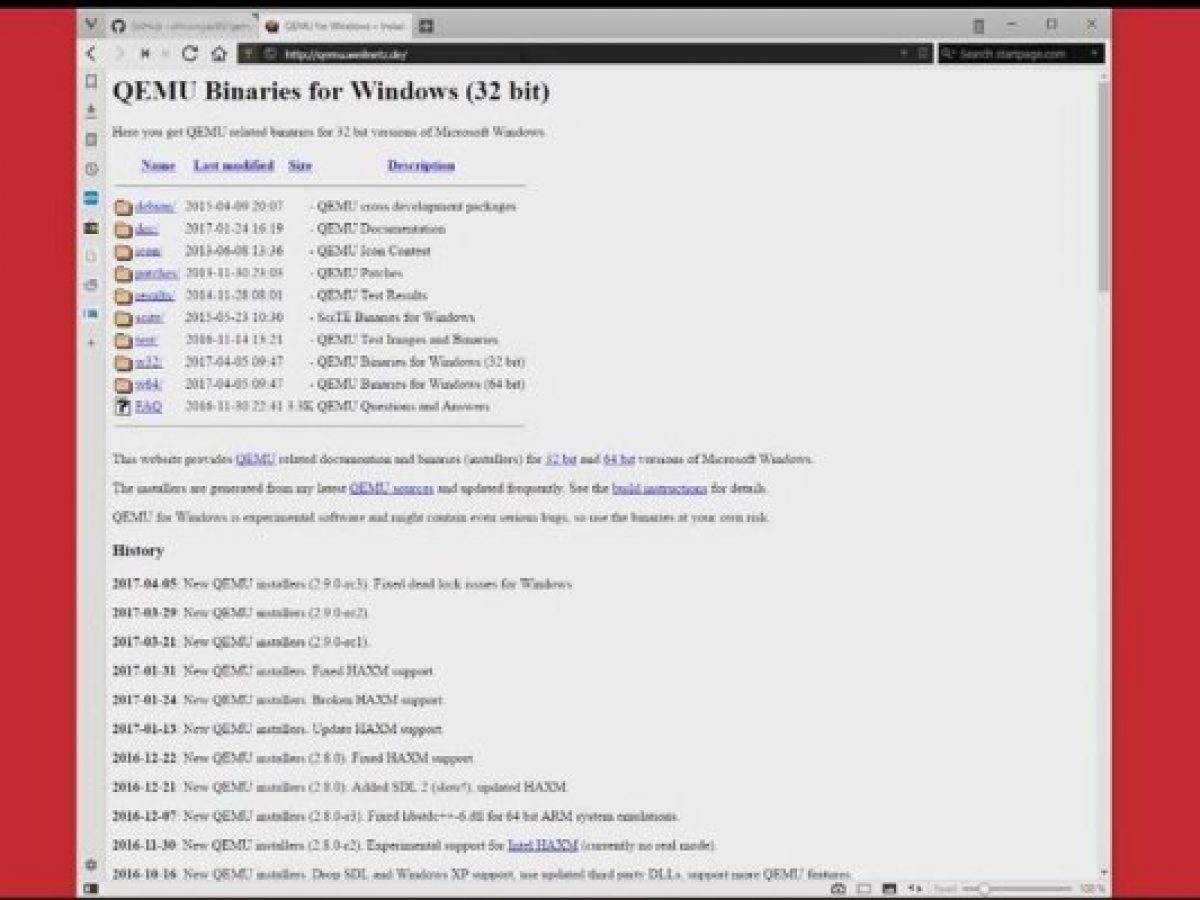


Copy over Kernel initrd.img file #ĭuring the installation stage you’ll see this screen warning us that no bootloader has been installed.īefore you can use the freshly installed MIPS image you first need to extract the Kernel initrd.img- file found in the /boot partition of the image.
#Qemu tutorial how to#
This page describes how to install QEMU for use with FreeRTOS demo applications that target the QEMU emulator, rather. Therefore you’d either want to kill process or enter cli shell by selecting Go Back > Go Down > Execute Shell and type command poweroff that will shutdown the virtual machine. for use with FreeRTOS demos applications. Unfortunately, if you hit continue qemu will reboot right back into the installer. create - This tells qemu-img that we are creating a disk image. It is necessary for using the following command. It will create an output similar to this: The command is broken down like this: qemu-img - This is the name of the program. qemu-img create -f qcow2 example.img 100M. Once you see this screen your installation has completed and it’s time to shutdown. The standard command for creating a basic hard disk image is this. However, 2.8.0 hangs on boot after the message: Console: switching to colour frame buffer device 100x30 This goes to show how unstable -M raspi2 still is. On this newer Ubuntu, QEMU 2.8.0 is the default, so we dont need to compile QEMU from source for -M raspi2. The writer has yet to explore network bridging and other network connectivity. failed Ubuntu 17.04, QEMU 2.8.0 -M raspi2, Raspbian, vanilla kernel. I highly recommend installing a SSH server so you can communicate with the host machine for uploading and downloading files whilst in a NATed network.
#Qemu tutorial update#
This allows the virtual machine to install and update packages. To start the installation type: $ qemu-system-mips -M malta \īy default QEMU enables a NATed network interface for Internet connectivity through the hosts network. The installation process is almost identical to the standard x86_64 or i386 architectures. QEMU 3.1.Before starting make sure all three files ( hda.img, vmlinux-4.9.0-6-4kc-malta and initrd.gz) are actually in the current working directory. I have covered that at: How to install X11 on my own Linux Buildroot system?īut because Buildroot does not focus enough on the run part to my needs (more automation, more boot types, GDB step debug), I extended it with some extra scripts on this project: īuildroot 2019.08 QEMU build failed because QEMU 3.1.1 release has a broken x86_64 build.

Note however that the default Buildroot build does not have an interesting GUI like X11 by default, as that is not the most common use case for this project. You are now left on a shell and you can login with username root (no password). drive file=output/images/rootfs.ext2,if=virtio,format=raw \ Time make BR2_JLEVEL="$(nproc)" HOST_QEMU_OPTS='-enable-sdl -with-sdlabi=2.0' Tutorial - emulate AIX 7. This tutorial for installing macOS Sierra has been adapted for Proxmox 5. To make absolutely sure that it will work, we can make Buildroot build QEMU for us, and use the exact QEMU CLI provided by Buildroot at: git clone QCOW, stands for QEMU copy-on-write, is the default storage format for virtual.


 0 kommentar(er)
0 kommentar(er)
